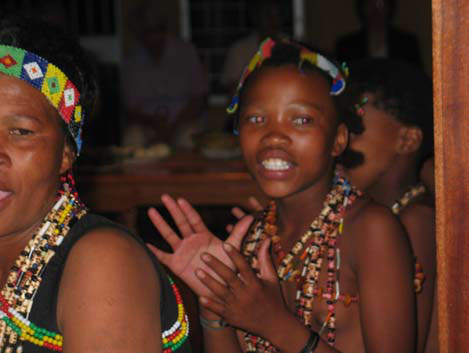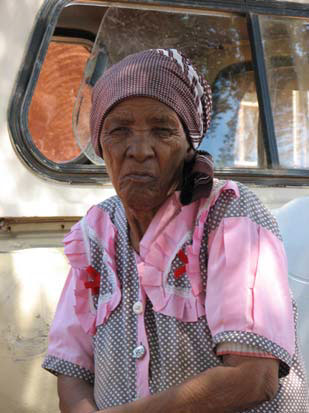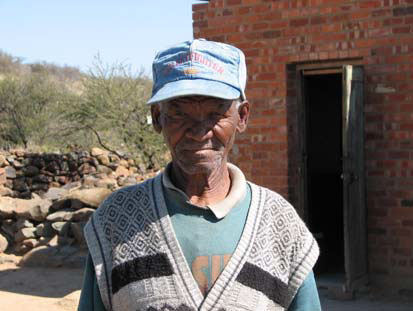David Morris 2005
Head of Archaeology, McGregor Museum, Kimberley
Copies of the references cited may be obtained from: dmorris@museumsnc.co.za

Introduction
What is IKS? Put most simply, IKS is local knowledge, as opposed to what might be termed global knowledge, or, in a colonial context, metropolitan (or ‘western’) knowledge. IKS also includes much of what anthropologists record in the form of ethnography. (One might debate to what extent a truly ‘global knowledge system’ actually exists: people invariably act locally; and ‘western’ knowledge systems include forms of IKS). IKS is also taken specifically to be the knowledge of traditional practitioners, or of indigenous language speakers; it includes folklore and beliefs, ceremonies, customs, dances, music, folk recipes, veld foods and medicines, indigenous ecological knowledge, oral history, living history. These indigenous and local perspectives are threatened by hegemonic knowledge and power structures in modern nation states and a policy exists in South Africa to sustain IKS.
It is important to realise that IKS is, like all of human culture, dynamic – it changes. It would be wrong to think of IKS as in any sense static or primordial (something that extends unchanged from a deep precolonial past – although aspects or elements of it may have a long history). ‘Culture’ and ‘ethnicity’ are similarly dynamic, fluid, changing.
History and IKS: the past in the present.
It is relevant to ask, what is history? History is a range of accounts, different versions, of the past, about the past, which are remembered, told, written, displayed, given in TV documentaries, scientific reports, etc, in the present. Historians and archaeologists, working in the present, deal with what may be termed traces of the past (old documents, artefacts, sites, oral histories). The traces contain (or can be made to yield) clues as to what life was like in the past. The clues are put together/analysed to produce evidence. Interpretations (books, documentaries, reports etc) are then based on this evidence. The one thing we cannot avoid is history’s (and science’s) present orientation, since our research is carried out in the present. (We aspire towards truth about the past, but ultimately the best we can hope for is a good approximation, a version that accords well with the evidence we have at our disposal – conscious also that that ‘good approximation’, as well as the way the evidence is put together, may be influenced by a range
of social/political/ideological factors).
IKS may represent, in one sense, traces from the past (e.g. memories, traditional knowledge); and it may also constitute a version of hist
again, IKS is a phenomenon in the present.


IKS as a resource in research and education: case studies
Any historian or archaeologist may use IKS in one form or another. But IKS is more relevant, or more extensively useful, in some applications than others.
The case studies set out here demonstrate the uses and limitations of IKS in relation to the scientific study of human origins and history. In each case IKS is used as an analogy. When we use an analogy in archaeology we use contemporary inform observations to interpret ancient remains.
Case study 1: Kalahari hunter gatherers and research into early human history
In the late nineteenth century it was widely held that existing ‘primitive’ societies represented examples, as “living fossils” in an evolutionary sense, of past stages of human life and culture.
In the 1960s the Harvard Kalahari Expedition hoped to identify and research isolated foragers (hunter-gatherers) who represented the “way of life [i.e. hunting and gathering] that was, until 10 000 years ago, a human universal”.
The expectations of this research programme have been questioned (San people in the Kalahari are not living fossils; their way of life has not been static for 10 000 years; they have interacted more or less with other people and lifeways for centuries). But indigenous ecological knowledge (e.g. of veld foods and animals), for instance, may be useful to construct models (analogies) for understanding early human subsistence strategies of gathering and hunting.
But how far back in time can we push analogies based on modern Homo sapiens sapiens behaviour? How relevant is IKS to these questions of early human history?
From this example we can understand why IKS-based analogies, or the use of ethnographic analogies, are likely to be more useful and meaningful for the recent past, where direct historical linkages can be demonstrated; and less useful (if not actually misleading) the further back one goes in time.
Case study 2: Central Cattle Pattern in Iron Age research
In the archaeology of agricultural farming in Southern Africa, the idea of a “Central Cattle Pattern”, which is derived from recent ethnographic studies (that is, from IKS), has been applied to interpretations of the spatial layout of Iron Age archaeological sites dating back as far as Earlier Iron Age times (e.g. Huffman 1988, 1998). Dwellings were arranged around a central cattle kraal, where grain storage pits were located and where important people (mainly men) were buried. From indigenous knowledge it is known that this layout, in turn, symbolises relationships between people (gender, family relationships, status) and between the spirit and real worlds (sacred forces). People achieved status, success and power through their wealth in cattle. Cattle were central to marriage customs: bridewealth (lobola or bogadi) was an exchange of cattle for wives. In this way cattle underlay family relations and political power. It has been said that cattle-owning elders “would rather starve to death than eat one of their cows”.
Describing the town of Dithakong (near Kuruman), and the activities in which people engaged, Petrus Borcherds (who visited there in 1801), recorded that: “The herding of cattle, the milking of cows and everything thereto related are also important activities. With the arrival of the oxen from the fields, one may spy an orator mounting a high 3
place or rock and with his hands on his hips he addresses his favourite cow or ox with much praise.”
This outsider account discerned the fact that cattle were important, and that people even developed a special fondness for certain cows or oxen. But the insider perspective, using IKS and an analogy or model called the Central Cattle Pattern, gives a fuller insight into the social, sacred and political significance of cattle amongst these farming people.
Case study 3: //khom scrapers in Namaqualand
Recent work with Nama people in Namaqualand has brought to light important indigenous knowledge which can be used for interpreting sandstone pebbles found in archaeological pastoralist sites in the region that date back up to 2000 years (Webley 1990). The Nama used sandstone pebbles as scrapers for preparing animal hides. This scraper is called a //khom or skraapklip. It is an artefact that archaeologists might easily have missed because it is not flaked and shaped like the classic Later Stone Age scrapers. The input of indigenous knowledge in this instance has provided vitally important information for interpreting the material traces of pastoralism in South Africa.
Case study 4: The significance and meaning of rock art.
Background to rock art
Southern Africa has a rich heritage of rock art in the form of engravings and paintings. In the Northern Cape rock engravings predominate. Style and content vary from region to region and through time. However, many similarities link most of the art as part of a single broad tradition.
Different rock art techniques were used: Pecked engravings were made by chipping or chiselling the outer crust of the rock with a hard stone. Hairline or fineline engravings were incised with a sharp stone tool. Some of the oldest engravings were made by this method. Scraped or scratched engravings were made by scraping off the outer crust of the rock to produce silhouette images of animals and people. Rock paintings in the Northern Cape are mostly designs painted with the finger. Pigments were obtained from minerals: various shades of reds and yellows from ochre; black from manganese and occasionally from charcoal; and white from white clay. Paint was made by mixing these with gypsum, plant saps and fibre, eggwhite, and, possibly, water. Blood was also used – in one documented case eland blood was preferred.
Dated rock art includes engraved stones excavated at Wonderwerk Cave in the Northern Cape, up to 10 000 years old. Painted stones from Apollo 11 Shelter in Namibia are associated with dates of about 27 000 years ago. Finds at a few sites indicate that some form of art can be traced back further into Middle Stone Age times, for example the 77 000 year old engraved ochre at Blombos Cave. In the last 2000 years some engravings were made by Iron Age farmers, others by Khoekhoe, and some rock engravings in the Northern Cape were made by Griqua and Trekboer frontiersmen, and soldiers during the Anglo-Boer War.
The role of IKS
Detailed knowledge of San beliefs and customs (that is, IKS) recorded in the last 150 years suggests that San rock art may be linked with ritual specialists called medicine people or shamans, and that engravings and paintings were symbols and metaphors for religious beliefs, depicted on rocks so that others could share and draw spiritual inspiration from them. “The paintings represent rain-making,” remarked a San man named Qing, in conversation with J.M. Orpen in Lesotho, in the 1870s: “We see here a water thing, or water cow wherever this animal goes, rain will fall.” Thus many images of large animals in the rock art might relate to rain-making.
In the 1870s Dr Wilhelm Bleek and his sister-in-law Lucy Lloyd learnt the language of Khoisan hunter-gatherers from the Northern Cape’s Karoo region, who called themselves |Xam. Bleek and Lloyd wrote down |Xam folklore and oral history. These writings – a collection of some 12 000 pages – give an “insider’s view” of |Xam society, then on the brink of extinction, now central to an understanding of San religion and rock art.
In the trance dance – an important healing ritual – women sang and clapped “medicine songs” around a central fire, while men danced around them. The dance increased in intensity. A shaman would feel supernatural potency “boil” inside him or herself. As a !Kung shaman explained, “In your back you feel a pointed something, and it works its way up. The base of your spine is tingling, tingling, tingling…”
Entering a trance state – which was the spiritual realm – the shaman drew out sickness and “harm’s things” from individuals in the group. Rain-making and out-of-body travel were other ritual skills of shamans. The visions experienced during trance would have been the inspiration behind the imagery in rock art. God, the source of all potency, was a trickster-deity called |Kaggen. |Kaggen’s favourite animal was the eland. “Elands are there. Giraffes are there. Gemboks are there. Kudus are there. They are God’s possessions.”
Animal images are a major symbolic element in Khoisan art and mythology. In the art large game animals predominate, and the eland is a central symbol. Human figures are less common in engravings than in paintings; and men are shown more often than women. Group scenes include dances. Another notable feature consists of images of transformation, for example of men into animals, or vice versa. These engravings and paintings most clearly relate to the religious beliefs and ritual trance dance of Khoisan hunter-gatherers. Geometric images are found in large numbers at some engraving sites and it is possible that some were inspired by visions, called “entoptics”, experienced during trance. Some researchers believe that the geometric engravings were made within a separate ethnic context, namely by the Khoekhoe. See the attached article for an alternative view that uses a broad spectrum of San and Khoe IKS, suggesting that the geometric engravings at Driekopseiland may relate to water and to female puberty rites (Morris 2002).
To the San the universe was layered, where spiritual realms existed above and below the level of everyday life. Rock art showing snakes and other animals emerging from cracks in a rock or cave wall suggest that the rock itself was an interface between this world and the world of spirits and spirit animals. Rock art was made at special places in the landscape, powerful places which may have been regarded as ‘entrances’ into the spirit world. The article on Driekopseiland alludes to these aspects as well.
References
Huffman, T.N. 1988. Boschhoek and the central cattle pattern. In Evers, T.M., Huffman, T.N. & Wadley, L. (eds). Guide to archaeological sites in the Transvaal. SA3.
Huffman, T.N. 1998. The antiquity of lobola. South African Archaeological Bulletin 53:57-62.
Morris, D. 2002. Driekopseiland and “the rain’s magic power”: history and landscape in a new interpretation of a Northern Cape rock engraving site. Masters dissertation, University of the Western Cape.
Robins, S. 2001. NGOs, “Bushmen” and Double Vision: The Khomani San Land Claim and the Cultural Politics of “Community” and “Development” in the Kalahari. Journal of Southern African Studies. 27:833-53.
Sylvain, R. 2002. “Land, Water, and Truth”: San Identity and Global Indigenism. American Anthropologist. 10:1074-85.
Webley, L. 1990. The use of stone ‘scrapers’ by semi-sedentary pastoralist groups in Namaqualand, South Africa. South African Archaeological Bulletin 45:28-32.
